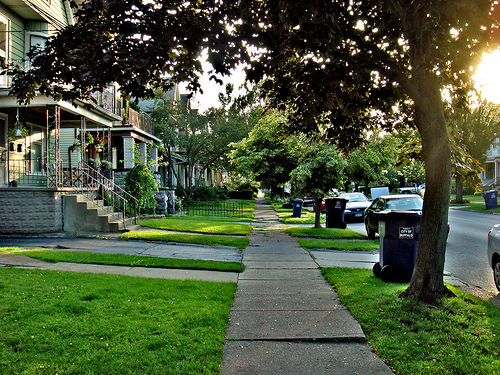Welcome to the Neighborhood–USGBC Introduces New LEED Rating for Communities
The Washington, D.C.-based U.S. Green Building Council's internationally recognized official stamp of sustainability has been awarded to millions of buildings around the world, but with the organization's introduction of the LEED for Neighborhood Development rating system, entire communities can now achieve LEED certification.
May 3, 2010
By Barbra Murray, Contributing Editor
The Washington, D.C.-based U.S. Green Building Council’s internationally recognized official stamp of sustainability has been awarded to millions of buildings around the world, but with the organization’s introduction of the LEED for Neighborhood Development rating system, entire communities can now achieve LEED certification.
Along with the Natural Resources Defense Council and Congress for the New Urbanism, USGBC developed LEED-ND–USGBC’s seventh rating system–to further address the issue of sprawl. The new rating system is designed to sway developers to build projects inside or within close proximity to existing communities and/or public transportation in an effort to conserve land, reduce automobile use and encourage walking.
“Sustainable communities are prosperous communities for the occupants and businesses which inhabit them,” said Rick Fedrizzi, President and CEO of USGBC, noted in a prepared statement. “LEED for Neighborhood Development projects are strategically located in or surrounding metropolitan areas–often times revitalizing brownfields, infills or other underutilized spaces, opening new revenue streams, creating jobs opportunities and helping to drive the local, state and national economies.”
In addition to its effect on the environment, LEED-ND is designed to have a social impact, as well. The rating system promotes the fostering of neighborhoods that unite residents of varying economic standing and age groups in a live-work-play environment with housing ranging from multifamily to single-family residences, commercial offerings and public space.
Developers and property owners seeking LEED-ND certification for projects ranging from small endeavors to entire communities have high standards to meet. The projects are judged based on acres as opposed to square footage–a first for the LEED rating system–and must meet specific standards in the categories of Smart Location & Linkage, Neighborhood Pattern & Design and Green Infrastructure & Buildings.
The green movement in real estate, despite global economic challenges, continues to inspire not only developers of new properties, but owners of existing properties, too. More and more, owners of buildings that don’t meet certain standards of sustainability are engaging in retrofitting to render their facilities more environmentally friendly.
Presently, approximately 7 percent of the world’s renovation market consists of green renovations, and that figure is expected to increase to 15 percent by 2015, according to Rockville, Md.-based market research firm SBI Energy’s new Global Green Building Materials and Construction report. Economic stimulus programs in various countries around the world have kept the retrofitting sector going, and the increasing cost of energy coupled with the decreasing pool of fuel resources will continue to feed its growth in the coming years.








You must be logged in to post a comment.